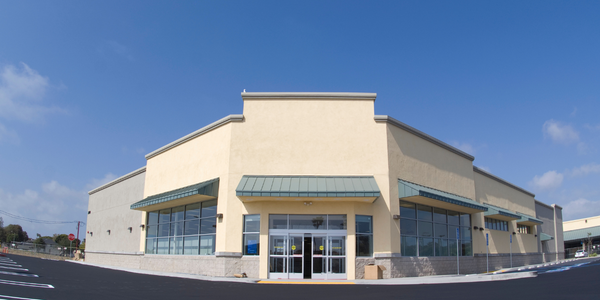适用行业
- 服装
适用功能
- 物流运输
- 采购
用例
- 供应链可见性(SCV)
关于客户
Ethical Merch Co 的客户主要是大型非营利组织。这些顾客不仅看重他们购买的促销商品和品牌服装的价格,还看重他们所关联的品牌的声誉。他们对道德采购的产品感兴趣,并热衷于与能够提供此类产品的公司合作。这些客户还会查看 SAQ 和 SMETA 审核数据,表明对其供应商的道德实践有浓厚的兴趣。通过选择与 Ethical Merch Co 合作,这些客户表明了对负责任采购和道德商业实践的承诺。
挑战
Ethical Merch Co 是一家澳大利亚促销品和品牌服装制造商和经销商,在开始发展和获取大型非营利客户时面临着重大挑战。虽然价格对于客户来说是一个关键因素,但 Ethical Merch Co 明白品牌声誉更为重要。该公司面临着为客户提供符合道德标准的产品的挑战,这项任务需要深入了解其供应链,并有能力确保各个层面的道德实践。该公司董事总经理 Nathan Kingston 认识到需要与一家拥有强烈商业道德并能够帮助他们应对这一挑战的公司合作。
解决方案
Ethical Merch Co 与以其严格商业道德而闻名的 Sedex 公司合作,应对提供道德采购产品的挑战。 Sedex 帮助 Ethical Merch Co 对其自身及其供应链中的其他人进行负责任的商业教育。 Ethical Merch Co 使用 Sedex SAQ 数据、SMETA 审核数据和定制调查问卷,并辅以电话访谈来绘制和探索其供应链。他们能够绘制供应链的第一层,对于某些产品,他们还绘制了进一步的层。这使得 Ethical Merch Co 能够向客户和供应商宣传负责任企业的价值。此外,Ethical Merch Co 还制定了道德采购路线图、商业计划和行为准则,以最可持续的方式实现其增长目标。尽管法律没有要求,他们还自愿制作并提交了一份《现代奴隶制声明》。
运营影响

Case Study missing?
Start adding your own!
Register with your work email and create a new case study profile for your business.
相关案例.

Case Study
Fire Alarm System and Remote Monitoring Sytem
Fire alarm systems are essential in providing an early warning in the event of fire. They help to save lives and protect property whilst also fulfilling the needs of insurance companies and government departments.Fire alarm systems typically consist of several inter-linked components, such as smoke detectors, heat detector, carbon monoxide, manual call points, sounders, alarm and buzzer. The fire alarm system should give immediate information in order to prevent the fire spread and protect live and property.To get maximum protection a shoe manufacturer in Indonesia opted for a new fire alarm system to monitor 13 production sites spread over 160 hectars. Although the company had an existing fire alarm system, it could not be monitored remotely.It was essential that the new system would be able to be monitored from a central control room. It needed to be able to connect to the existing smoke detector and manual call point. Information should be easily collected and passed on to the Supervisory Control and Data Acquisition (SCADA) system. Furthermore, the system should have several features such as alarm management, auto reporting, being connected to many client computers without additional cost, and run 24/7 without fails. The company also needed a system which could be implemented without changing the architecture of the existing fire alarm system.

Case Study
IoT Applications and Upgrades in Textile Plant
At any given time, the textile company’s manufacturing facility has up to 2,000 textile carts in use. These carts are pushed from room to room, carrying materials or semi-finished products. Previously, a paper with a hand-written description was attached to each cart. This traditional method of processing made product tracking extremely difficult. Additionally, making sure that every cart of materials or semi-finished products went to its correct processing work station was also a problem. Therefore, the company desired an intelligent solution for tracking assets at their factories. They also wanted a solution that would help them collect process data so they could improve their manufacturing efficiency.

Case Study
Retailer Uses RFID Scanner to Improve Efficiency
Patrizia Pepe wished to improve the logistics of their warehouse: accepting incoming goods from their production sites, movement of items throughout
the warehouse, and packaging of goods for distribution to the retail locations. They initially tried to use barcodes for this function. Because barcodes must be individually scanned within a line-of-sight, the acceptance of goods coming into the warehouse was too time consuming. Working with the University of Florence, Patrizia Pepe instituted a five-month pilot project beginning in August of 2009 to test the validity of an RFID solution. The pilot involved tagging of about 60,000 items for the second seasonal collection, and convinced the company to move forward with tagging all items.

Case Study
Monitoring and Controlling Automatic Mixing and Dispensing Machines
As technology advances, textile manufacturing has been transformed from a labor-intensive to a partially or fully automated industry. Automation is significant in all segments of textile production - from spinning to printing, and textile machinery manufacturers are constantly searching for new technologies and automation processes will increase the productivity of their machines. The color paste mixing and dispensing machine is an essential part of the printing and dyeing process. With the advantage of automatically computerized controls and database management, the system can significantly improve its dispensing precision, working efficiency and production quality as well as reducing material consumption.





